|
Borgmann Aquaponik und Hydroponic offers advice, technology, technical knowledge and the conceptual design of the entire plant from a single source. This is a unique selling point of the company. The change from traditional agriculture to aquaponics or hydroponics is a big step for the entrepreneur. It requires a rethink in many aspects and, not least, large investments. However, the costs for the conversion hardly exceed the price of a modern agricultural machine, and the system does not need any oil or have to be inspected by the TÜV. Here, the company Borgmann Aquaponik Hydroponik offers a new possibility to transform the agricultural business into the twenty-first century. The EU already offers subsidies for this new technology, which makes conversion even more attractive for many interested parties. The offer includes feasibility studies, advice on the technical implementation, the installation of the systems as well as training in their handling and operation.
Furthermore, we offer calculation of the operating costs, quantification of the risks as well as an amortisation planning for the evaluation of the economic viability on the basis of the investment volume in relation to the selected foodstuffs and the expected operating costs. We also provide services for the partial optimisation of existing or third-party plants. The optimisation offer includes, among other things, the adjustment of nutrient mixtures, lighting optimisation in closed plants with consideration of the growth phase in artificial light. Our special field of research is the adapted nutrient requirement depending on the growth phase of the respective plant. This requires a biochemical analysis of the nutrients consumed or required by the plant depending on its stage of development.
Overview of services
You can reach us by phone 0041-79-58 35 913. |
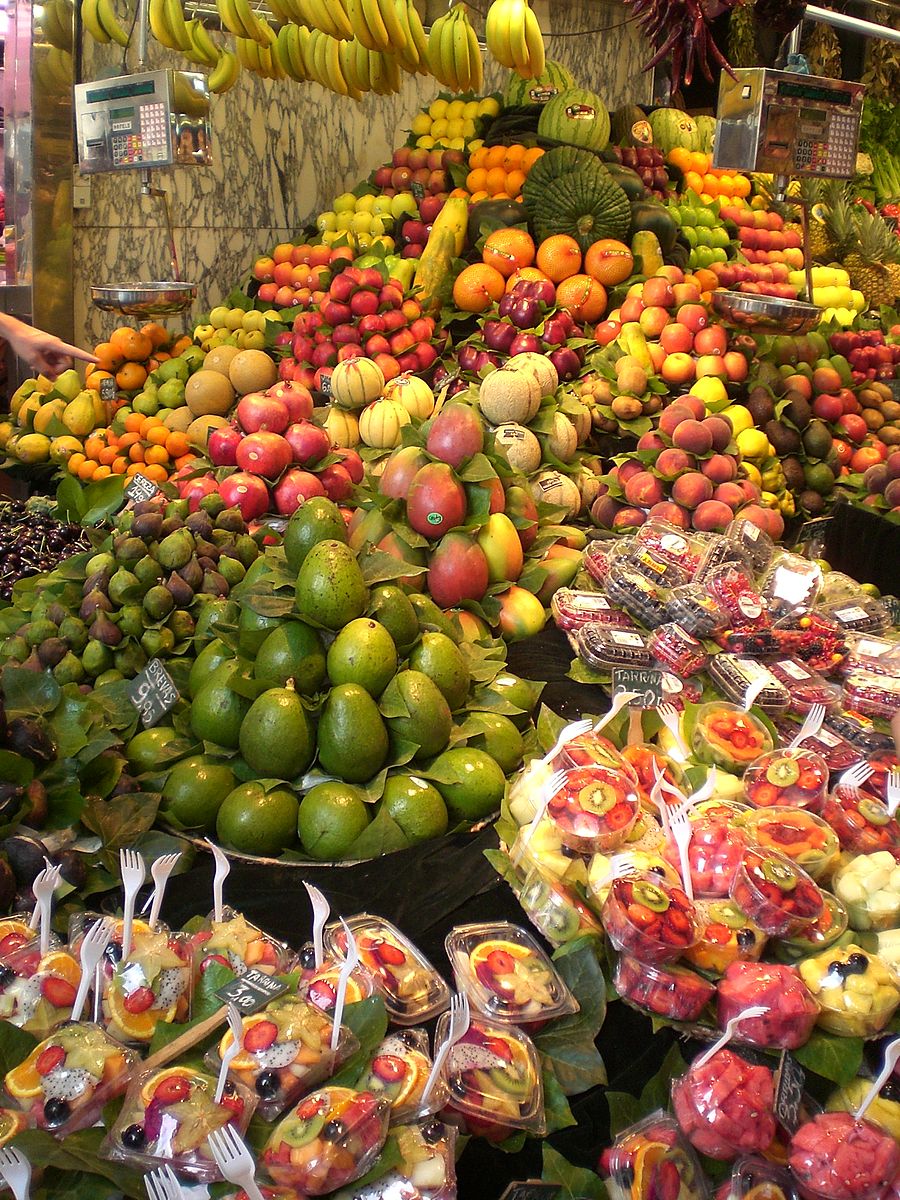 |
- Details
- Category: The Company

- Details
- Category: The Company
-
Also available:

Our motivation
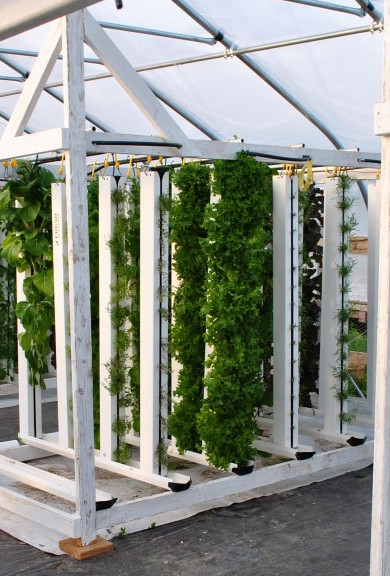
Our motivation is the desire to sustainably provide food with a minimum of negative effects on nature and the environment. Our business model is to combine an optimum yield with a minimum of resources and costs through research. Our primary objective is sustainable agriculture. The knowledge and experience we have acquired through our own research and experience is ultimately the product we sell to you. Our experience allows you to build up an optimal farm without time- and cost-intensive investments.
Abstract
The aim of our company is to provide technology, knowledge, advice and realisation in all aspects of aquaponics & hydroponics. The company itself carries out research and development in the related areas of the fertiliser composition depending on planting, growth phase and season, the selection, control, monitoring and maintenance of the necessary pumps, filters and regulators, remote monitoring of the system, growth and success control. In addition, we develop all the software for control, regulation, monitoring and supervision ourselves or use open source and licence-free products.
The monitoring can be done centrally via computer or decentrally via PC or microcontroller (Arduino and Rhaspberry). The sensors for nutrients, conductivity and process control (water exchange and water flow monitoring, nutrient concentration, oxygen content, etc.) are all based on industry standard sensors. Depending on the system, a very inexpensive spot check with a photometer is available in the single-digit euro range per measurement and substance, or in the four-digit range for a continuous measurement and control, depending on the substance. In the field of analysis, we can also recommend various alternatives.
Contact
You can reach us by phone, email or at our research site. Please make an appointment so that we have enough time for you. Even without an appointment, you are welcome to visit our testing and research facilities during normal office hours.
You can reach us by telephone on 0041-79-58 35 913 or in Portugal on 00351-966 06 30 50.
Here you will find our contact form.
Address research and development facility
Portugal PT - 6005-210 Louriçal do Campo
Estrada de Oles
GPS Format DDD: 40.035 -7.5215
GPS Format DMS: 40°02'06.0 "N 7°31'17.4 "W
ID: 51
- Details
- Category: The Company
-
Also available:

Consultation and visit to our test facility in PortugalPlease make an appointment so that we have enough time to answer your questions. You can reach us at 00351-966 06 30 50 during normal business hours. We offer regular tours of our facility. Please contact us directly or check our calendar to see if one of the next dates would suit you.
Would you like a consultation? Just send us a short message and we will get in touch with you as soon as possible: You can find the contact form here.
|
 |
- Details
- Category: The Company
A 'plant' for the future
Fresh vegetables & fish – directly from you.
Fully automatic, sustainable & efficient.
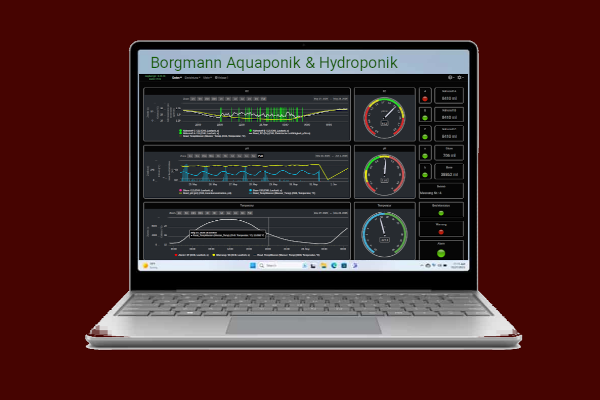
Why Aquaponics & Hydroponics?

Sustainable
Up to 90% less water consumption
compared to field cultivation.

Efficiently
High yields in a small area
– regardless of weather & soil.

Freshly
They harvest healthy food every day
directly on site.
Our Solutions
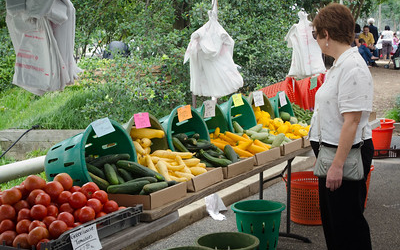
Privately
Compact systems
for home & garden.

Gastronomy
Herbs & Vegetables
fresh in the kitchen.

Education
Teaching systems
for schools & universities.
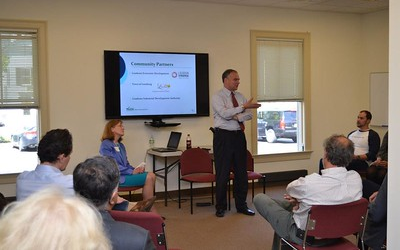
Commercially
Scalable systems
for production & commerce.
That's how it works
- 1. Consultation: Clarify goals & possibilities.
- 2. Planning: Individual conception & design.
- 3. Installation: Quick implementation on site.
- 4. Care: Service, maintenance ∓ remote support.
- More details about the consultation →
- More details about the technology →
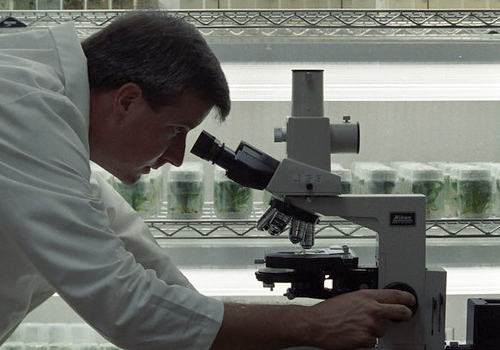
Interactive


Contact & Advice
Book your consultation or send us your inquiry...
- Aquaponics
- Hydroponics
- Ökoponik
- Plants
- Fish
- Sprouts
- Microgreens
- Biofilter
- Biofilter Media
- Activating Biofilters
- Documentation
- Studies & Information
- Customer Area
- Imprint
- GENERAL TERMS AND CONDITIONS
- GDPR
- Termination §312k
- Training Ccourses
- Analyzes
- Our service
- SLA
- Details
- Parent Category: The Company
- Category: Consulting
-
Also available:

Your path to a successful aquaponics or hydroponics system – step by step to your goal:
Setting up an aquaponics or hydroponics system is an investment in the future – ecologically, sustainably, and economically sensible. Regardless of size, this technology offers enormous opportunities for both end consumers with some space in their garden (from 5 square meters) and farmers with several hectares of land to grow food in a water-saving and environmentally friendly way.
To ensure that your project is built on a solid foundation from the outset, we support you with a clearly structured approach. This ensures that all aspects are carefully thought through and that you receive a system that works efficiently and is successful in the long term.
Our proven process for your success
🔹 Orientation discussion – In an initial exchange, we clarify your individual requirements, ideas and goals. We discuss what possibilities aquaponics offers you and how your project can best be realized.
🔹 Detailed discussion – Once the basic framework has been clarified, we go into detail: technical planning, system dimensioning and specific requirements are carefully analyzed to find the best possible solution for you.
🔹 Facility tour – A look into the practice is priceless. You will have the opportunity to experience our existing aquaponics systems up close and gain valuable insights into how they work and how they are managed on a daily basis.
🔹 Site visit – To ensure that the system functions optimally, we personally inspect your site. We take into account factors such as water and energy supply, space and climatic conditions.
🔹 Offer – Based on the information collected, you will receive a transparent, tailor-made offer that clearly presents all relevant costs and services.
🔹 Applications to authorities – The legal requirements can be a challenge, but we won't leave you alone. We support you with the necessary permits and official coordination so that your project can start smoothly.
🔹 Installation – As soon as all preparations are complete, we take over the professional implementation. Your aquaponics system will be professionally installed and put into operation so that you can start production quickly and efficiently.
Targeted Planning – Efficient Implementation – Sustainable Success
With our structured approach, you minimize risks, save time and receive a system that is optimally tailored to your needs. Contact us now for a non-binding initial consultation - we look forward to your project!
Here are some aspects that will give you some initial orientation:
ID: 22
- Aquaponics
- Hydroponics
- Ökoponik
- Plants
- Fish
- Sprouts
- Microgreens
- Biofilter
- Biofilter Media
- Activating Biofilters
- Documentation
- Studies & Information
- Customer Area
- Imprint
- GENERAL TERMS AND CONDITIONS
- GDPR
- Termination §312k
- Training Ccourses
- Analyzes
- Our service
- SLA
- Details
- Parent Category: The Company
- Category: Consulting
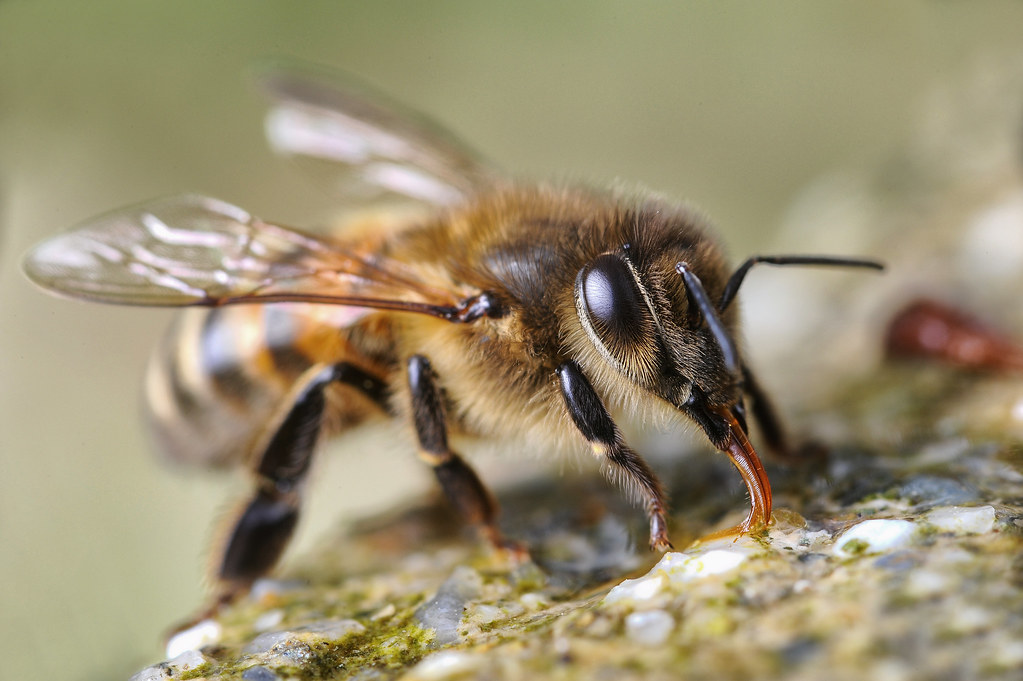 Your path to a successful aquaponics system – step by step to the goal
Your path to a successful aquaponics system – step by step to the goal
Setting up an aquaponics system is an investment in the future – ecologically, sustainably and economically sensible.
To ensure your project is built on a solid foundation right from the start, we support you with a clearly structured approach. This ensures that all aspects are carefully considered and that you receive a system that operates efficiently and is successful in the long term.
Our proven process for your success
🔹 Orientation meeting – In an initial consultation, we'll clarify your individual requirements, ideas, and goals. We'll discuss the possibilities aquaponics offers you and how your project can best be realized.
🔹 Detailed discussion – Once the basic framework has been clarified, we go into detail: Technical planning, system dimensioning and specific requirements are carefully analyzed to find the best possible solution for you.
🔹 Facility Tour – A practical look at our aquaponics systems is priceless. You'll have the opportunity to experience our existing aquaponics systems up close and gain valuable insights into their functionality and daily management.
🔹 Site visit – To ensure optimal system operation, we personally inspect your site. We consider factors such as water and energy supply, space availability, and climatic conditions.
🔹 Offer – Based on the information collected, you will receive a transparent, tailor-made offer that clearly presents all relevant costs and services.
🔹 Regulatory Applications – Legal requirements can be challenging, but we're here to help. We support you with the necessary permits and regulatory approvals to ensure your project gets off to a smooth start.
🔹 Installation – Once all preparations are complete, we take over the professional implementation. Your aquaponics system will be professionally installed and commissioned, allowing you to start production quickly and efficiently.
Targeted planning – Efficient implementation – Sustainable success
With our structured approach, you minimize risks, save time, and receive a system that's optimally tailored to your needs. Contact us now for a no-obligation initial consultation – we look forward to discussing your project!
Here are some aspects that will give you some initial orientation:
Image: "Porteuse d'eau" by patdebaz is licensed under CC BY 2.0.
- Aquaponics
- Hydroponics
- Ökoponik
- Plants
- Fish
- Sprouts
- Microgreens
- Biofilter
- Biofilter Media
- Activating Biofilters
- Documentation
- Studies & Information
- Customer Area
- Imprint
- GENERAL TERMS AND CONDITIONS
- GDPR
- Termination §312k
- Training Ccourses
- Analyzes
- Our service
- SLA
ID: 609
- Details
- Parent Category: The Company
- Category: Consulting
-
Also available:

 Aquaponics is a combination of aquaculture and hydroponics and is subject to various legal aspects and conditions. Specific regulations may vary from region to region, so it is important to check with local authorities and relevant bodies. Here are some general legal aspects to consider when it comes to aquaponics:
Aquaponics is a combination of aquaculture and hydroponics and is subject to various legal aspects and conditions. Specific regulations may vary from region to region, so it is important to check with local authorities and relevant bodies. Here are some general legal aspects to consider when it comes to aquaponics:Compliance with water quality standards to prevent pollution.
Species-specific regulations and restrictions for fish farming.
Compliance with standards for the use of pesticides and herbicides, especially when traditional farming methods are used alongside aquaponics.
Compliance with health and hygiene standards in the processing and handling of aquaponics products.
Compliance with local land use planning and development regulations.
Measures to mitigate any negative environmental impacts.
Compliance with waste disposal regulations.
Obtaining the necessary building permits to install the system.
Compliance with labor laws, including fair labor practices.
Clear labeling of organic or sustainable practices where applicable.
It is crucial to contact local agricultural extension offices, environmental agencies and relevant authorities to understand and navigate the specific legal circumstances in your area. Advice from legal experts who specialize in agriculture and aquaculture can also provide valuable insight and guidance. Remember that regulations may evolve. Therefore, staying informed and acting proactively is essential to complying with regulatory requirements in aquaponics.
- Details
- Parent Category: The Company
- Category: Consulting
-
Also available:

Find Your Suitable System — Initial Assessment
3–5 brief details are sufficient. The estimate is rough and does not replace a quote.
Recommendation
Note: This is a rough orientation. Individual factors (local construction costs, delivery routes, additional requests) can significantly change prices - in both directions.
ID 732
- Aquaponics
- Hydroponics
- Ökoponik
- Plants
- Fish
- Sprouts
- Microgreens
- Biofilter
- Biofilter Media
- Activating Biofilters
- Documentation
- Studies & Information
- Customer Area
- Imprint
- GENERAL TERMS AND CONDITIONS
- GDPR
- Termination §312k
- Training Ccourses
- Analyzes
- Our service
- SLA
- Details
- Parent Category: The Company
- Category: Consulting
-
Also available:

Global Developments in Aquaponics
Urban Farming, Food Security and Political Framework Conditions Worldwide
From local initiatives to global movements: How aquaponics becomes part of the solution to the greatest challenges of our time.
🏙️ Urban Farming: From Niche to Mainstream
What once began as hobby gardening on rooftops has developed into a global movement revolutionizing cities and communities. The global urban farming market reached a value of 160.2 billion USD in 2024 and will grow to 312.4 billion USD by 2033 – a doubling in less than a decade.
Technology Integration
Smart systems becoming standard
These numbers reflect a fundamental shift: cities no longer see urban farming as "nice-to-have" but as a strategic necessity for food security, climate resilience, and economic development.
🌍 The Global Food Crisis is Intensifying
While the urban farming market booms, the global food situation paradoxically worsens. Over 600 million people are expected to suffer from hunger in 2030, and the UN Sustainable Development Goal "Zero Hunger" by 2030 is acutely endangered.
Current Food Security Situation (2024):
Aquaponics as Strategic Response
In this context, aquaponics positions itself as key technology that simultaneously addresses several critical challenges:
🎯 Direct Impacts
- ✓ Local food production in urban centers
- ✓ Independence from global supply chains
- ✓ Year-round, weather-independent harvest
- ✓ Minimal transportation effort
🔗 Systemic Effects
- ✓ Job creation in disadvantaged areas
- ✓ Education and training opportunities
- ✓ Strengthening local communities
- ✓ Climate resilience of urban systems
📜 Political Directions Worldwide
Governments increasingly recognize the potential of urban farming and aquaponics. Political measures now include zoning changes in favor of urban agriculture, financial incentives for farmers, and educational programs.
USA 2024
USDA invests 5.2 million USD in 17 new urban agriculture projects, focused on disadvantaged communities and job creation.
EU 2024
European Parliament evaluates SDG 2 (Zero Hunger) as critically missed and calls for increased investments in sustainable agricultural technologies.
UN Global 2024
High Level Political Forum focuses on "sustainable, resilient and innovative solutions" – urban farming is classified as core strategy.
OECD 2024
78 countries develop National Urban Policies (NUPs) to address urban challenges, including sustainable food production.
🔬 Technological Revolution Accelerates Adoption
The integration of artificial intelligence, IoT sensors, and automated systems makes aquaponics not only more efficient but also more accessible to non-experts. This development democratizes access to technology.
AI Optimization
Algorithms automatically optimize feeding, pH values and nutrient cycles
Remote Monitoring
Smartphone apps enable system monitoring from anywhere
Modular Systems
Plug-and-play solutions dramatically reduce entry barriers
Blockchain Tracking
Transparent supply chains from production to consumer
🗺️ Regional Pioneers and Their Strategies
🇸🇬 Singapore: The Vertical Nation
30% self-sufficiency by 2030 through vertical agriculture. State subsidies for aquaponics startups.
🇳🇱 Netherlands: High-Tech Agriculture
Export of aquaponics technology as national economic sector. Research funding in millions.
🇰🇪 Kenya: Community-Based Solutions
Small-scale aquaponics projects improve nutrition and income in rural areas.
🇨🇦 Canada: Arctic Food Security
Aquaponics containers for remote northern regions. Reduces dependency on expensive imports.
⚡ Hurdles and How They Are Overcome
Urban agriculture can relieve pressure on rural agriculture and secure food supply within a sustainable framework. Nevertheless, challenges remain:
🚧 Current Hurdles
- High initial investments
- Complex regulatory landscape
- Lack of qualified workforce
- Energy costs in temperate climates
✅ Emerging Solutions
- Financing models and leasing options
- Standardized approval procedures
- Online training and certifications
- Solar integration and heat pumps
🚀 The Next Decade: Forecasts and Potentials
Development is accelerating exponentially. What are pilot projects today will become standard infrastructure of urban development tomorrow.
Expected developments by 2035:
- Scaling: From 160 billion USD (2024) to over 500 billion USD market volume
- Integration: Aquaponics becomes standard in new urban development projects
- Automation: Fully automatic systems reduce labor by 80%
- Decentralization: Neighborhood-level food security becomes the norm
Become Part of the Global Movement?
The future of food production is being shaped today. Be part of it.
Contact & Advice
Book your consultation or send us your inquiry...
Sources & References
- Business Research Insights (2024): "Urban Farming Market Analysis Report 2025-2033" - Market forecasts and CAGR development
- The Business Research Company (2024): "Urban Farming Global Market Report" - Aquaponics segment analysis
- UN Sustainable Development (2024): "Goal 2: Zero Hunger" - Current figures on child nutrition worldwide
- UN Department of Economic and Social Affairs (2024): "Goal 2 Progress Report" - Stunting reduction rates and goal achievement
- Grow Director (2025): "Urban Agriculture in 2025: A Growing Trend" - USDA investments and funding programs
- European Parliament (2024): "Achieving Food Security: SDG 2 Assessment" - EU assessment of goal achievement
- UN HLPF (2024): "High Level Political Forum on Sustainable Development" - Global policy priorities
- OECD (2024): "Global State of National Urban Policy" - 78-country analysis of urban policies
- PMC - National Center for Biotechnology (2022): "Urban agriculture: technology, socio-economy, and policy review"
- Medium - Mercy O. Omolola (2023): "Emerging Trends in Urban Farming" - Policy trends and future orientation
Further Studies & Reports
OECD Urban Policy Analysis
Comprehensive analysis of national urban policies in 78 countries
To OECD Study →More about Aquaponics
- Aquaponics
- Hydroponics
- Ökoponik
- Plants
- Fish
- Sprouts
- Microgreens
- Biofilter
- Biofilter Media
- Activating Biofilters
- Documentation
- Studies & Information
- Customer Area
- Imprint
- GENERAL TERMS AND CONDITIONS
- GDPR
- Termination §312k
- Training Ccourses
- Analyzes
- Our service
- SLA
- Details
- Parent Category: The Company
- Category: Consulting
-
Also available:

Market needs & nutrition
How aquaponics helps meet the increasing demand for fresh food
The world population is growing, demand for sustainable food is increasing – and traditional agriculture is reaching its limits. Aquaponics offers innovative solutions for future food security.
The global challenge of food security
The numbers speak for themselves: by 2050, the world population will grow to an estimated 9.7 billion people. At the same time, consumer behavior is changing – the need for fresh, high-quality food is continually increasing.
Current situation:
- Severe food insecurity will affect almost 1 billion people in 2028
- Demand for food must increase by 70-100% by 2050
- Traditional agriculture uses 70% of the world's fresh water
Conventional agriculture faces enormous challenges: climate change, land degradation, water scarcity and the loss of agricultural land due to urbanization. If food demand grows as forecast, we would need 120% more water, 42% more cultivated land and produce 77% more greenhouse gases by 2050.
The booming aquaponics market
Faced with these challenges, the aquaponics industry is experiencing unprecedented growth. The global aquaponics market is showing impressive growth rates, reflecting increasing interest in sustainable production methods.
Markt size 2024
1,09 billion USD
Current market value of the global aquaponics industry
2030 forecast
USD 2,29 billion
Expected market volume with 13.5% annual growth
These figures highlight not only the potential of the technology, but also the growing acceptance among consumers, investors and politicians. Particularly interesting: leafy vegetables already control 45.8% of sales, while herbs and microgreen reflect the trend towards functional foods with 22.3% annual growth.
Why aquaponics is the answer
Aquaponics combines fish farming with crop production in a closed-loop system, addressing several critical points of modern food production:
Water efficiency
90% less water consumption compared to conventional agriculture thanks to closed cycles
Space efficiency
Up to 10x higher yields per square meter through vertical farming methods [7]
Local production
Fresh food directly on site, regardless of climate and season
Sustainability
No pesticides, minimal CO2 emissions due to short transport routes
Successful implementation in practice
The theory is already being successfully put into practice. Meal kit companies in the American Midwest have adapted their ingredient forecasts to the harvest rhythms of tilapia and pak choi, thereby reducing product deviations by 19%.
In Europe, food service buyers are increasingly favouring aquaponics products after temperature-controlled delivery hubs cut spoilages by 22%. Premium basil and coriander from aquaponics systems achieve wholesale prices that are 200-300% higher than conventionally grown vegetables.
The future of food security
The increasing demand for local and organic food continues to drive the growth of the aquaponics industry. The combination of resource efficiency, local production and high food quality makes aquaponics a key technology for future food security.
Especially in urban areas, where most of the world's growing population will live, aquaponics offers the opportunity to produce fresh food directly on site – regardless of global supply chains and climatic conditions.
A further article on this topic find here.
Interested in sustainable food production?
Discover how aquaponics can also improve your food security.
⇄ Arrange a personal consultationSources and Further Information
Market Data & Statistics
Grand View Research: Aquaponics Market Analysis & Forecast 2024-2030
Go to Source →More about Aquaponics
- Aquaponics
- Hydroponics
- Ökoponik
- Plants
- Fish
- Sprouts
- Microgreens
- Biofilter
- Biofilter Media
- Activating Biofilters
- Documentation
- Studies & Information
- Customer Area
- Imprint
- GENERAL TERMS AND CONDITIONS
- GDPR
- Termination §312k
- Training Ccourses
- Analyzes
- Our service
- SLA
- Details
- Parent Category: The Company
- Category: Consulting
-
Also available:

Borgmann Aquaponik und Hydroponi offers advice, technology, technical knowledge and the conceptual design of the entire plant from a single source. This is a unique selling point of the company.
The change from traditional agriculture to aquaponics or hydroponics is a big step for the entrepreneur. It requires a rethink in many aspects and, not least, large investments. However, the costs for the conversion hardly exceed the price of a modern agricultural machine, and the system does not need any oil or have to be inspected by the DOT (Department Of Traffic).
Here, the company Borgmann Aquaponik Hydroponik offers a new possibility to transform the agricultural business into the twenty-first century. The EU already offers subsidies for this new technology, which makes conversion even more attractive for many interested parties.
The offer includes feasibility studies, advice on the technical implementation, the installation of the systems as well as training in their handling and operation.
Furthermore, we offer calculation of the operating costs, quantification of the risks as well as an amortisation planning for the evaluation of the economic viability on the basis of the investment volume in relation to the selected foodstuffs and the expected operating costs. We also provide services for the partial optimisation of existing or third-party plants.
The optimisation offer includes, among other things, the adjustment of nutrient mixtures, lighting optimisation in closed plants with consideration of the growth phase in artificial light.
Our services include the general takeover or just the technical planning of farm projects up to the construction management and commissioning of the plant. We also provide advice and support during operation.
Our special field of research is the adapted nutrient requirement depending on the growth phase of the respective plant. This requires a biochemical analysis of the nutrients consumed or required by the plant depending on its stage of development.
Services
|
Consulting |
On construction issues, operation, amortisation, etc. |
|
|
Calculation |
BraekEvenPoint calculation, construction costs, operating costs |
|
|
Manufacturing |
The electronics and mechanics of the control system are created |
|
|
System configuration |
On scope, equipment, programming according to the type of system |
|
|
Project support |
Clarification of building permits, environmental regulations, etc. |
|
|
Setup |
The system, technology, configuration, operating mode, etc. on site |
|
|
Configuration |
of the control technology, redundancy in the event of component failure, etc. |
|
|
Optimierung |
Nutrient configuration, lighting in closed systems, etc. |
|
|
Trtaining |
The employee and technician to operate the plant |
You can reach us by phone at 0041-79-58 35 913 in Switzerland or at 00351-966 06 30 50 in Portugal.
Here you can find our contact form.
- Details
- Parent Category: The Company
- Category: Consulting
-
Also available:

Resource Efficiency Comparison
Water, Energy & Land Requirements: Aquaponics vs. Traditional Agriculture
Scientifically-based analysis of resource consumption – with surprising results showing where aquaponics excels and where challenges remain.
The Great Resource Comparison
When it comes to sustainable agriculture, numbers are decisive. Aquaponics is often praised as a revolutionary solution – but how efficient is it really? A detailed analysis of the three critical resources water, energy, and land shows a nuanced picture.
💧 Water Efficiency: The Clear Winner
Water Requirements Comparison:
🔄 Aquaponics
Closed-loop system with minimal water loss through evaporation. Only 1% water loss per day [4]
- ✓ No irrigation water
- ✓ No wastewater
- ✓ 99% water recycling
🚜 Conventional Agriculture
70% of global freshwater is used for irrigation [5]
- • High evaporation rates
- • Infiltration & runoff
- • Seasonal fluctuations
The reason for this dramatic water savings lies in the closed-loop system: there is almost no evaporation in these systems. The only water consumption occurs through transpiration – what the plants actually use. This efficiency makes aquaponics particularly attractive for water-scarce regions.
⚡ Energy Consumption: The Complex Truth
Energy consumption becomes more complex. Aquaponics systems require continuous energy for pumps, heating, and often lighting – conventional agriculture benefits from free solar energy.
🌾 Conventional Agriculture
Average energy requirement for field crops [8]
- • Tractors & machinery
- • Irrigation systems
- • Transport & storage
- • No heating required
However: The energy efficiency of aquaponics improves dramatically through:
- Solar energy integration (up to 50% cost reduction possible)
- Optimized operating hours (11.7% energy savings) [9]
- Heat pumps instead of direct heating
- Elimination of transport costs with local production
🏡 Land Efficiency: Aquaponics Dominates
Here the true strength of aquaponics is revealed: through vertical growing methods and year-round production, land requirements are revolutionized.
🏗️ Vertical Aquaponics
Yield per square meter through multi-layer cultivation [10]
🌿 Standard Aquaponics
Yield through year-round production and optimal conditions
🚜 Field Agriculture
Seasonal production, weather-dependent, large areas needed
Land efficiency becomes even more impressive when considering that aquaponics eliminates the need for large amounts of farmland, as plants are typically grown in vertical stacks or on floating rafts.
🎯 The Overall Balance: Context is Decisive
Aquaponics excels at:
- ✓ Water consumption (-90%)
- ✓ Land efficiency (+300-1000%)
- ✓ Local production (0 km)
- ✓ Year-round harvest
- ✓ Controlled quality
Conventional leads in:
- ✓ Energy consumption (significantly less)
- ✓ Established infrastructure
- ✓ Low entry costs
- ✓ Scalability
- ✓ Proven technology
🚀 The Potential is Just Being Unlocked
Current numbers show only a snapshot. Latest studies show that intelligent algorithms for temperature control based on solar forecasts can reduce grid dependency during peak hours, significantly improving energy balance.
Solar Integration
Combining aquaponics with solar systems can reduce energy costs by 50-70%
Smart Farming
IoT sensors optimize resource consumption automatically and reduce waste
Urban Integration
Waste heat from buildings can eliminate heating costs – utilizing synergy effects
Which System Fits Your Resources?
Every situation is unique. Let us find the optimal solution for your requirements together.
⇄ Schedule Personal Consultation NowScientific Sources & Studies
- Love et al. (2015): "Energy and water use of a small-scale raft aquaponics system in Baltimore, Maryland" - Journal of Aquacultural Engineering
- UNESCO (2024): "World Water Development Report" - Water consumption conventional agriculture
- PBS News (2015) & Multiple Studies: "Aquaponic farming water efficiency studies" - Consistent 90% water savings
- MIT Terrascope (2024): "Environmental Impact Analysis" - Aquaponics vs. conventional water usage
- FAO (2023): "The State of World's Land and Water Resources" - Global agricultural water consumption
- Love et al. (2015): Baltimore Aquaponics Study - 56 kWh/kg energy consumption detailed analysis
- MDPI Water Journal (2023): "Aquaponics: Sustainable Path to Food Sovereignty" - Heating cost analysis
- MIT Terrascope (2024): Arizona Case Study - Energy consumption conventional vs. hydroponic agriculture
- ScienceDirect (2024): "Energy-saving techniques in urban aquaponics farms" - Optimization potential
- FriendlyAquaponics: "Comparative Study: Aquaponics vs Traditional Farming" - Land efficiency analyses
Further Information
More about Aquaponics
- Aquaponics
- Hydroponics
- Ökoponik
- Plants
- Fish
- Sprouts
- Microgreens
- Biofilter
- Biofilter Media
- Activating Biofilters
- Documentation
- Studies & Information
- Customer Area
- Imprint
- GENERAL TERMS AND CONDITIONS
- GDPR
- Termination §312k
- Training Ccourses
- Analyzes
- Our service
- SLA
- Details
- Parent Category: The Company
- Category: Consulting
-
Also available:


